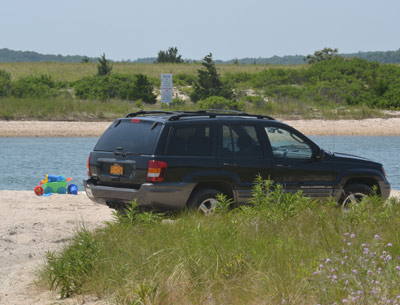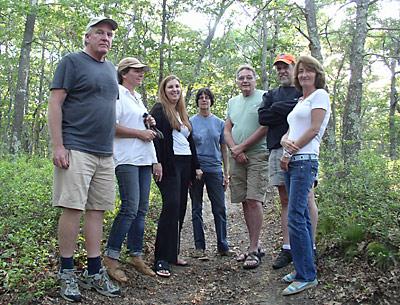Now Serving: Student Exodus
Now Serving: Student Exodus

As fall semesters loom, the annual exodus of college students from the South Fork has begun. For the area’s businesses, particularly restaurants and resorts, this presents a yearly challenge, for which the timing could hardly be worse. The three-plus months between the Memorial Day and Labor Day weekends constitute the span in which seasonal business owners earn a majority of their income. While many open before Memorial Day and stay open through Columbus Day or even Thanksgiving, July and August are crucial to a successful year, and the students’ mass departure leaves businesses shorthanded at the very time they are most needed. Service businesses, which are particularly reliant on college-age summer staff, are especially vulnerable. Some cope better than others. “It’s so standard and classic that I can predict it,” says Andrea Terry-Anthony, co-owner of the Lobster Roll (Lunch) on Napeague. “The faces change year to year, but the issues don’t.” “Pretty much the whole front-of-house staff” are college students or about to be, she said. “You just extend yourself into the positions,” she explained. She and two business partners “try to fill in the positions that people leave by extending our responsibilities.” The restaurants at Gosman’s Dock in Montauk, which stay open through Columbus Day, have long relied on college students from this country and Ireland, and, in recent years, Central and Eastern European countries. Faced with the annual loss of staff in the weeks before Labor Day, management has adopted some new hiring policies. “One thing we’ve learned over the years when we’re hiring new staff is to really get a date of when their last day of work will be, because in years past we’ve ended up getting caught without any staff at all,” said Michael Gosman. “That can really hurt. So one thing that is a prerequisite to even working here is their going-back date. Particularly with Irish students — of course we love to hire them, but they seemingly go back earlier every season. You get to the second week of August and they start saying, ‘Today is my last day,’ or, ‘I want to travel before I go back.’ So we actually make them show us their itineraries and flight tickets, and will even make copies of them and say, ‘You said you’d be here until Labor Day.’ ” If necessary, said Mr. Gosman, “You just make do with less. You do whatever it takes to get through the day. If that means I’ve got to wait tables or bartend, that’s just par for the course.” Not everyone is honest about their plans. “We had two Irish students that started at the beginning of June and were supposed to stay until Sept. 10,” said Bozena Krasnicki, general manager of the Oceanside Beach Resort in Montauk. “That’s what they told us when we hired them. Near the end of July, they came to me on a Friday and told me they were leaving on Sunday. One of them said she had a school program in Paris and the other didn’t want to stay by herself.” “Actually, one customer, who stays with us often, said she saw them in New York City. It was a shock, at the beginning of August, a very busy month, and it was big trouble for us.” Finding people to fill the void can be difficult, Ms. Krasnicki said. “To find someone to work just for the month, there’s no students available because they already have a job. We have to cover their job and ours.” European students, however, can be a blessing for such businesses. The fall semester at Charles University in Prague begins nearer to October than August, and Theresa Prochazka, 21, and Michala Topalova, 24, have pledged to remain at Gosman’s Clam Bar through Sept. 10. The women came to Montauk and Gosman’s through Alternative Travel and Educational Products, a Prague-based agency that arranged, for a fee, both visas and employment. “You already have the contract before you come here,” Ms. Prochazka explained. “You’ve already written your signature.” Told that Gosman’s was lucky to have employees with such a convenient schedule, Ms. Topalova was quick to reply, “We know. It’s why we can work here, why we can stay here.” “It’s quite lucky for us,” said Ms. Prochazka, “that [American students] have to leave! That’s the reason we can come.” At the Montauk Yacht Club, Jamie Pollina, the assistant front office manager, estimated a loss of nearly one-fourth of the staff of about 200 as Labor Day nears. “Long hours” is the consequence, he said. Employees are often reassigned from other departments to cover the mass departure at the resort, which remains open until Thanksgiving. The Yacht Club management tries to accommodate students, at least when there’s a good reason. Jeff Boesse, 25, a front desk agent, will leave tomorrow and return to Johnson State College in Vermont, where he is a hospitality and tourism management major. When he was hired, he said, “they asked me to give them a timeframe. Like any seasonal employer, they would like you to stay through the season, but they understand that this is an internship for me. They’re willing to work with me, since this is school-related.” At East Hampton Point restaurant, the general manager, Jacqueline LaBorne, is proactive. With some 45 percent of the staff of college age — several of them already gone — and with weddings and other catered events booked well into fall, she started hiring and training new staff before the student exodus. “I’ve been doing this for a long time, so I know people from Westhampton, Southampton, East Hampton, Sag Harbor,” she said. “Among those I’m going to be using on the weekends [after Labor Day], a lot of them have other careers, yet weekends always seem to work out for them to do catering.” Also, she said, “We have a lot of good people that work here and live here locally. They have friends, and putting the word out through them has really been beneficial.” Ms. Terry-Anthony of the Lobster Roll appeals to employees for “friends, sisters, brothers, anybody that wants to pick up some shifts.” Ultimately, though, the annual back-to-college flight translates to more blood, sweat, and, perhaps, tears for those who remain. “It’s hard,” said Ms. Terry-Anthony, “because customers’ expectations don’t change. They’re not interested in the problems of running a restaurant, nor should they be. Not only are we short-staffed, but then you have the normal things that come up, like somebody calling in sick. It’s very stressful, but we somehow always get through. You have to rise to the occasion.”









